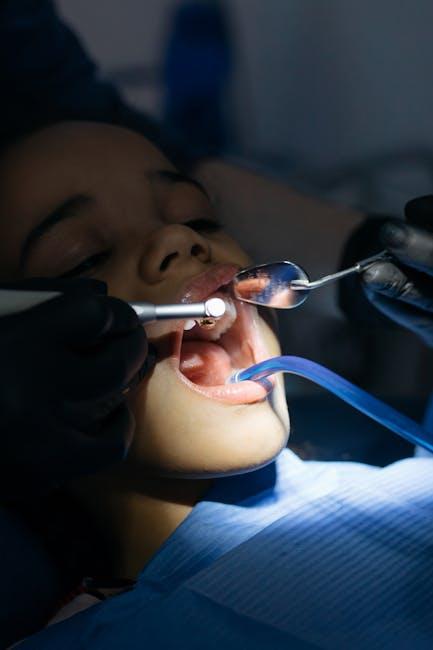1 in 3 Kids Has Dental Problems, Poll Finds – U.S. News & World Report
Dental health is a vital part of children’s overall wellbeing, yet a recent poll highlighted a concerning trend: 1 in 3 kids in the United States suffers from dental problems. This alarming statistic sheds light on a hidden crisis affecting millions of families nationwide.
Understanding the Scope: Why Are Childhood Dental Issues So Common?
The poll, cited by U.S. News & World Report, emphasizes the prevalence of oral health problems among children, including cavities, gum disease, and tooth decay. But why are dental problems so widespread among kids?
- Diet and Sugar Consumption: High intake of sugary snacks and beverages accelerates tooth decay.
- Inadequate Oral Hygiene: Many children do not brush or floss effectively or regularly.
- Limited Access to Dental Care: Socioeconomic factors restrict access to preventive dental services.
- Parental Awareness: Lack of education about the importance of early oral care contributes significantly.
Common Types of Dental Problems in Children
Recognizing common dental issues is essential for early intervention. Here are some typical problems faced by about one-third of children:
| Dental Problem | Description | Prevalence |
|---|---|---|
| Dental Caries (Cavities) | Decay of tooth enamel caused by bacterial acids from sugar consumption. | Most common; affects nearly 1/3 of kids |
| Gum Disease (Gingivitis) | Inflammation of gums leading to redness, swelling, and bleeding. | Less common but rising in children |
| Early Tooth Loss | Premature loss of baby teeth due to decay or trauma. | Reported by 10-15% of children |
The Impact of Poor Dental Health on Kids
Untreated dental problems can have long-lasting consequences on children, including:
- Chronic pain and discomfort leading to difficulty eating and sleeping.
- Speech development issues due to missing or damaged teeth.
- Low self-esteem and social anxiety because of visible dental problems.
- Absenteeism from school linked to dental pain or infections.
- Increased risk for serious infections and overall health complications.
Practical Tips to Prevent Dental Problems in Children
Prevention is the best solution. Parents and caregivers can adopt these simple yet effective strategies to safeguard their child’s oral health:
- Establish good oral hygiene routines: Brush teeth twice a day with fluoride toothpaste and floss daily.
- Limit sugary snacks and drinks: Encourage water, fruits, and vegetables instead of sodas and candy.
- Schedule regular dental check-ups: Biannual visits help catch problems early.
- Educate children: Teach proper brushing and flossing techniques.
- Use dental sealants: Ask the dentist about protective sealants, especially for molars.
- Ensure adequate fluoride intake: Utilize fluoridated toothpaste and community water supplies.
Quick Preventive Guide for Parents
| Action | How to Do It | Benefits |
|---|---|---|
| Brush Teeth Properly | Use a pea-sized fluoride toothpaste; brush all surfaces for 2 minutes. | Removes plaque, prevents cavities. |
| Limit Sugar Intake | Replace sodas and sweets with healthy snacks. | Reduces bacterial acid production. |
| Dental Visits | Visit every 6 months, early starting at age 1. | Early detection and intervention. |
Case Study: How Preventive Care Changed One Child’s Dental Health
Consider Emily, a 7-year-old who struggled with recurrent cavities by age 5. After her parents implemented a dental care routine and limited sugary intake, combined with twice-yearly dental visits, Emily saw marked improvement within a year. Her cavities ceased, gums healed, and she developed confidence in her smile.
This case highlights the critical role of early intervention, education, and lifestyle adjustments in preventing dental disease — a message that every parent needs to hear.
Accessing Dental Care: Challenges and Solutions for Families
Despite the proven benefits of good dental care, many families face obstacles to accessing services, such as:
- Insufficient dental insurance or high out-of-pocket costs.
- Geographical barriers, especially in rural areas.
- Lack of pediatric dentists or appointment availability.
Solutions to Bridge the Gap:
- Utilize school-based dental programs or community health clinics.
- Explore Medicaid or other government dental benefit programs for children.
- Advocate for policies that fund pediatric oral health initiatives.
- Leverage tele-dentistry for consultations where possible.
Conclusion: Protecting Our Children’s Smiles Starts Now
The revelation that 1 in 3 children in the U.S. battles dental problems underlines a pressing public health concern. The good news is dental diseases are largely preventable with the right knowledge, habits, and access to care. Parents, caregivers, educators, and policymakers must collaborate to ensure every child grows up with a healthy, happy smile.
Remember, by implementing proper oral hygiene, monitoring diet, and seeking timely dental care, you can drastically reduce the risk of dental problems and pave the way for lifelong dental wellness in the next generation.


